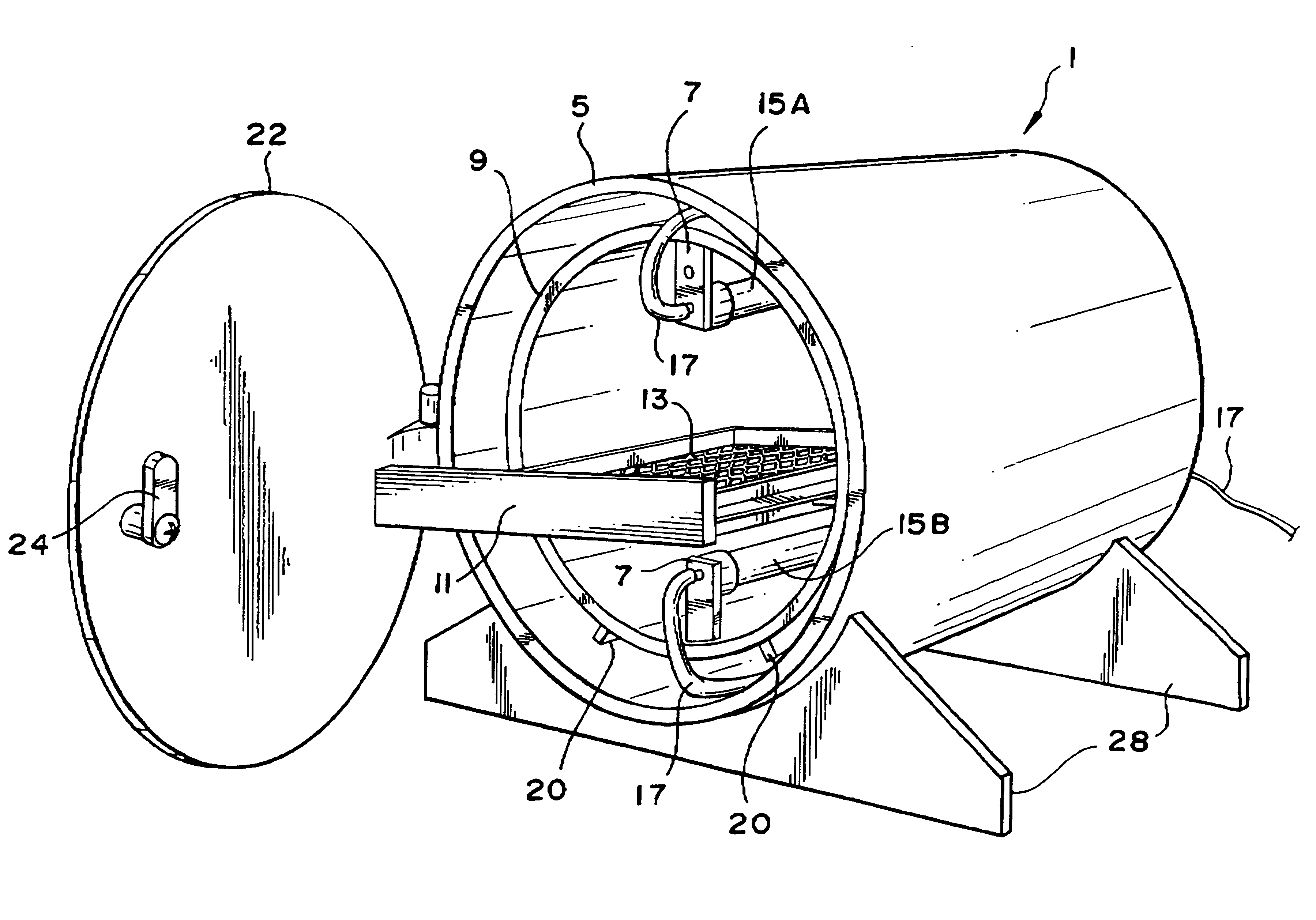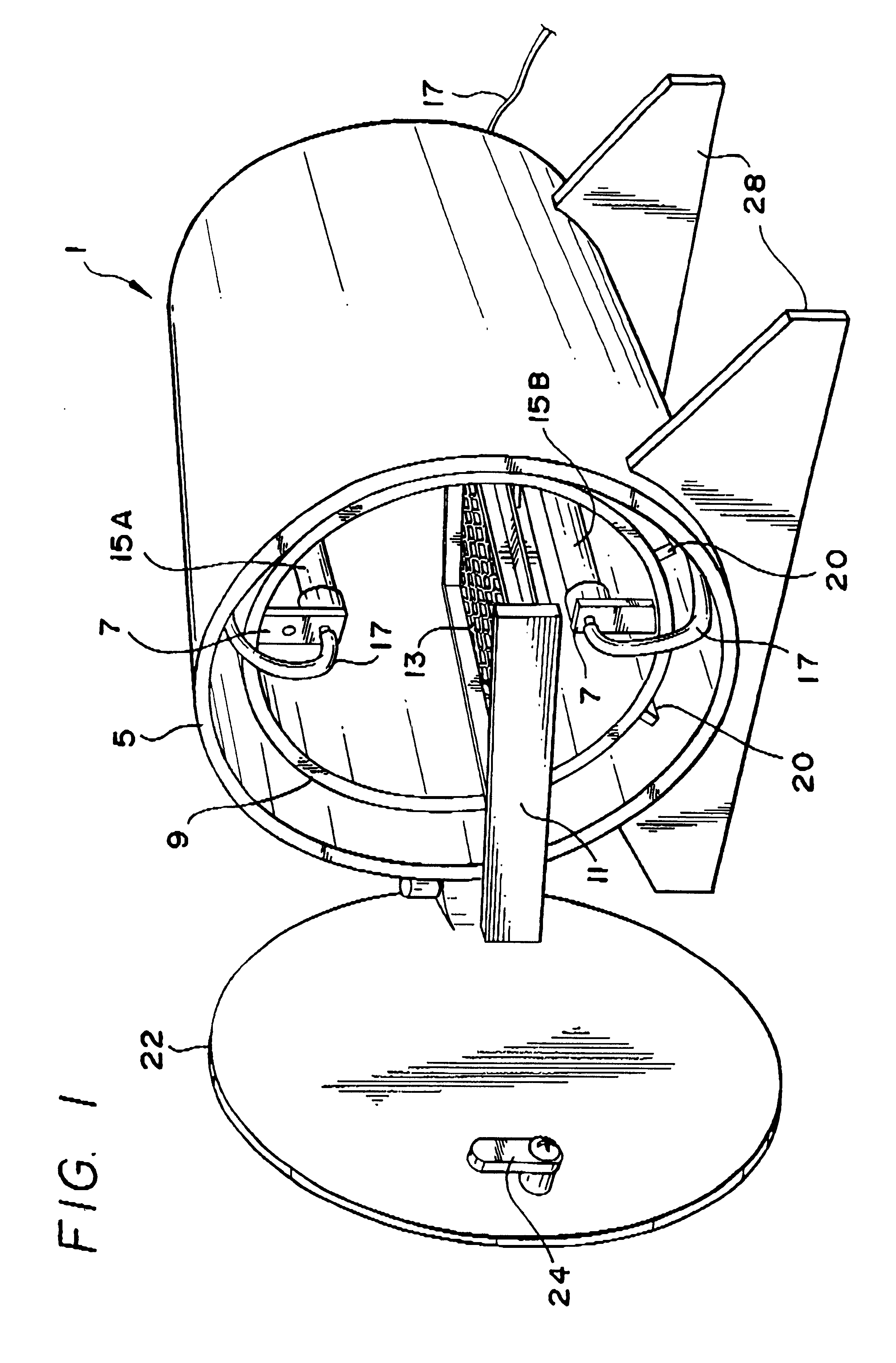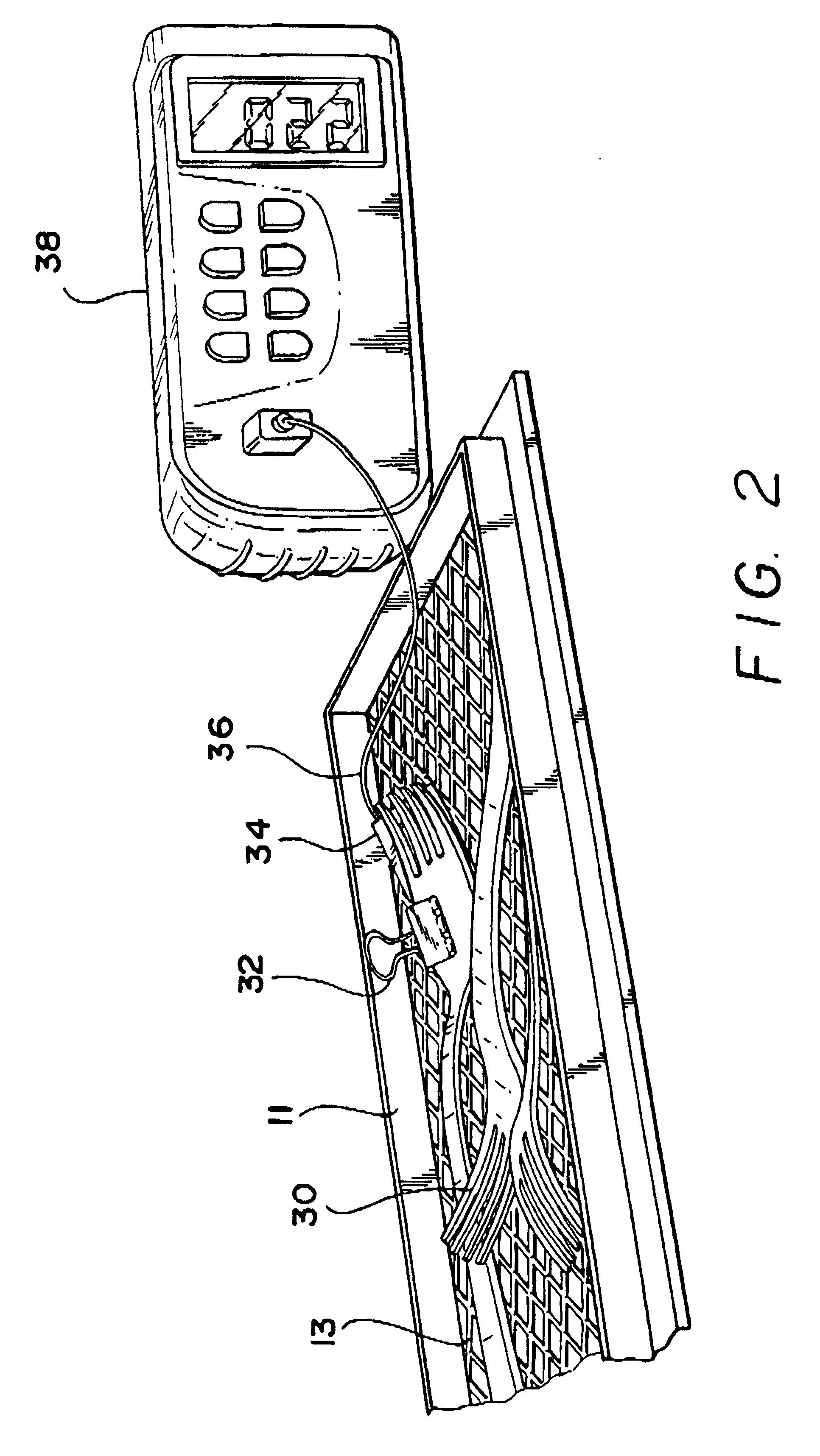Method and apparatus for infrared sterilization
a technology of infrared sterilization and infrared light, applied in lighting and heating apparatus, furniture, instruments, etc., can solve the problems of not necessarily killing all pathogens, affecting the ability of patients to control their muscles, etc., and achieve the effect of less energy
- Summary
- Abstract
- Description
- Claims
- Application Information
AI Technical Summary
Benefits of technology
Problems solved by technology
Method used
Image
Examples
Embodiment Construction
In a first aspect of the invention as shown in FIG. 1, sterilization apparatus 1 is provided for sterilization of objects such as medical, dental and veterinarian instruments, as well as tableware and eating utensils by infrared radiation. Apparatus 1 includes inner cylindrical chamber 9 positioned in outer body 5. Chamber 9 is maintained in spaced relationship to outer body 5 by supports 20. Chamber 9 includes elongated support members 42 for receiving and supporting tray 11 therein. Tray 11, preferably having wire mesh 13 therein, can be placed on support members 42 at a desired position in chamber 9. Wire mesh 13 has sufficient thickness to support objects for sterilization thereon. Any ambient atmosphere in chamber 9 optionally may be evacuated so that chamber 9 is in a state of negative pressure.
A single heating element, preferably upper and lower heating elements 15A,15B, respectively, for generating infrared radiation, are supported in chamber 9 by brackets 7. Heating element...
PUM
 Login to View More
Login to View More Abstract
Description
Claims
Application Information
 Login to View More
Login to View More - R&D
- Intellectual Property
- Life Sciences
- Materials
- Tech Scout
- Unparalleled Data Quality
- Higher Quality Content
- 60% Fewer Hallucinations
Browse by: Latest US Patents, China's latest patents, Technical Efficacy Thesaurus, Application Domain, Technology Topic, Popular Technical Reports.
© 2025 PatSnap. All rights reserved.Legal|Privacy policy|Modern Slavery Act Transparency Statement|Sitemap|About US| Contact US: help@patsnap.com



